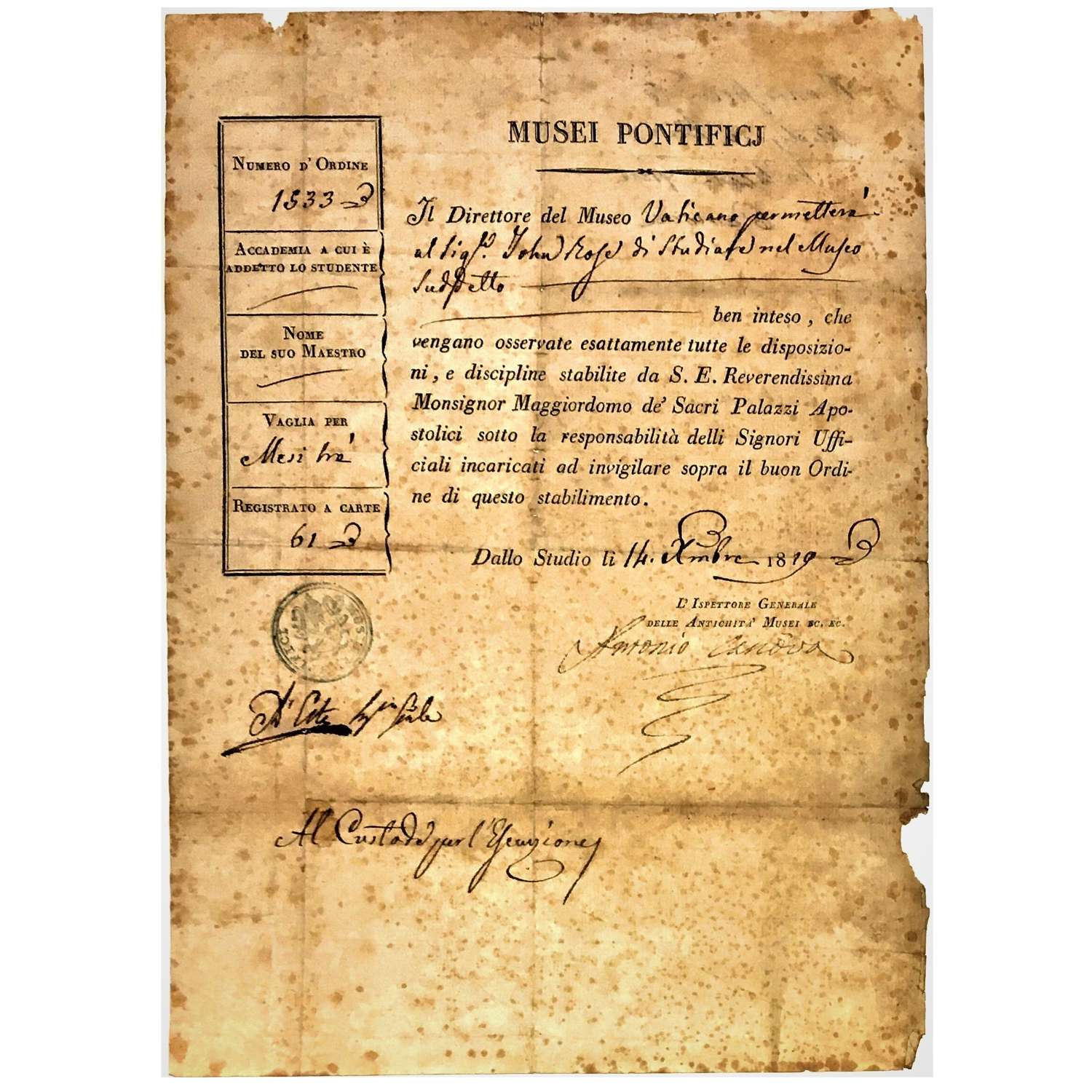
Code: 10370
Dimensions:
Antonio Canova (1757–1822)
Signed permit for study in the Vatican Museums
Printed permit for the "Musei Pontifici"
Completed in manuscript
1 page folio
Dated 1819
28.5 cm high x 20.3 cm wide (sheet)
Autograph signature of Antonio Canova (1757–1822) in his capacity as "L'Ispettore Generale delle Antichita Musei etc." Signed with the artist's usual flamboyant flourish beneath. One page printed on laid paper watermarked with a crown above a crest with a blacksmith working at an anvil, an "F" beneath. The document made out to "Sigr. John Rose". Countersignatory of a custodian with their title left, beneath the official "Musei Pontifici" stamp in blue ink. Document dated "14 Xmbre 1819" [14th December 1819]. Very old manuscript inscription verso reading "Permission to study in the Vatican from Canova".
In 1802 Pope Pius VII bestowed on Antonio Canova, by then the most celebrated artist in Europe, the title of "Inspector-General of Antiquities and Fine Art to the Papal State" (a position which had once been held by Raphael). In 1819, the year this document was signed, Canova laid the foundation stone to the Tempio Canoviano, the church which he himself had designed for Possagno (the town of his birth).
The document here is one of the official permits which Canova was obliged to issue to Grand Tourists, allowing them entry to view and study in the Vatican Museums. It is interesting to speculate whether the "Sigr. John Rose", to whom this permit is made out, is the John Rose (1772-1841) of "Coalport" china fame. At present there is scant information as to whether the "Coalport" John Rose ever travelled to Italy but, if he did, this document would be a fascinating piece of evidence for an interaction between two great innovators in their respective fields of art.
Condition good. Paper yellowing with some foxing commensurate with age, fritting to one side and historical folds.
Extremely rare.



